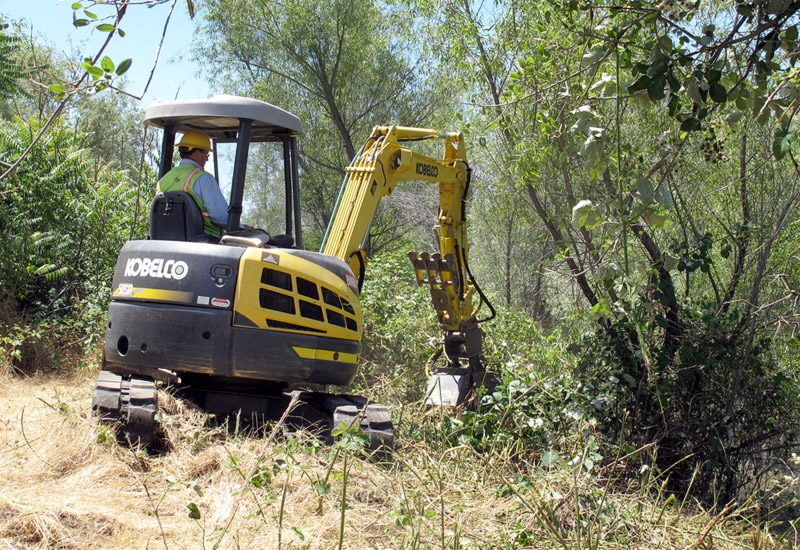Friday July 20, 2012

Whether you are restoring degraded habitat or trying to preserve natural landscapes, invasive species pose management challenges. Extricating well-established, invasive plants, as we are doing at a restoration site along the Stanislaus River, is a daunting task. We are clearing several acres dominated by tree-of-heaven (Ailanthus altissima) and Himalayan blackberry (Rubus armeniacus). Despite their lofty names, these plants are prolific and can quickly out compete native species in the riparian zone. Invasive plant removal can be achieved through various chemical, biological, and mechanical methods, but for our circumstances mechanical removal is the best option. Mechanical removal includes using saws, chains, or blades to dig, rip or cut undesirable plants. This method is usually labor intensive if done by hand, but tools such as a tractor or excavator with a brush shredder attachment quickly chop aboveground vegetation. This type of removal usually requires multiple visits (3-4 per year) for several years to prevent regrowth. However, that won’t be necessary for this project, since we will be using bulldozers to remove several feet of soil and grade the banks of the river channel. The outcome of this work will be additional floodplain and rearing habitat for salmon and steelhead; eliminating some non-native invasive plants along the way is just an added bonus.
